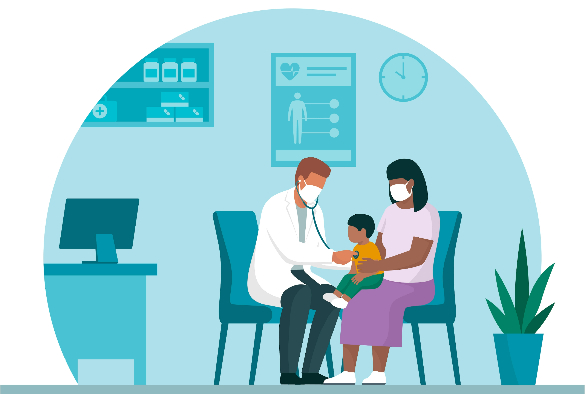
Researchers from the University of Liverpool have contributed to a paediatric study that provides valuable insights into the impact of Covid-19 on hospitalised children during the pandemic.
Since the pandemic, there have been numerous studies on the effect of the disease on adults. However, the role of variants of concern (VOC’s) on children remain less well defined. This latest paper, which collects data from 9 countries of children younger than 18, is the first multicentre analysis of Covid-19 severity in children over the course of the pandemic.
Calum Semple, Professor of Outbreak Medicine and Child Health at the University of Liverpool collected Covid-19 data from UK hospitals and contributed to this paper along with Investigators from the International Severe Acute Respiratory and emerging Infection Consortium (ISARIC) and the Paediatric Active Enhanced Disease Surveillance (PAEDS) network group.
The research analysed data from timeframes when different VOC’s were prevalent and their impact on three age groups: under 6 months, 6 months – 5 years and 5 – 18 years. While the median age of children admitted to hospitals was 4 years old, more critical illness was observed in children age 5 to 18 years old. Vaccines became available for children more than 5 years old in some countries during the course of this study, typically being prioritised for children older than 12 years. In this study, during the period when vaccines were available (albeit with variable uptake), only 0.4% to 0.8% of hospitalised teenagers had been vaccinated.
Professor Semple said: “This paper confirms that in general, the impact of Covid-19 on causing critical illness, i.e needing intensive care, in children lessened over the first two years of the pandemic, including when the omicron variant became dominant. The findings were consistent when the very few vaccinated children who were admitted to hospital were excluded from the analysis.
“This reduction in disease severity in children may reflect the protective effect of prior infection on the severe outcomes of disease, changes in clinical practice, case reporting, or indeed reduced virulence of the virus over time as it adapts to the human host.
“Overall, these findings highlight the importance of considering different paediatric age groups when assessing disease severity in Covid-19 and can help play a role in public health policies.”
The paper, International Pediatric Covid-19 Severity Over the Course of the Pandemic was published in JAMA Pediatrics (DOI:10.1001/jamapediatrics.2023.3117).